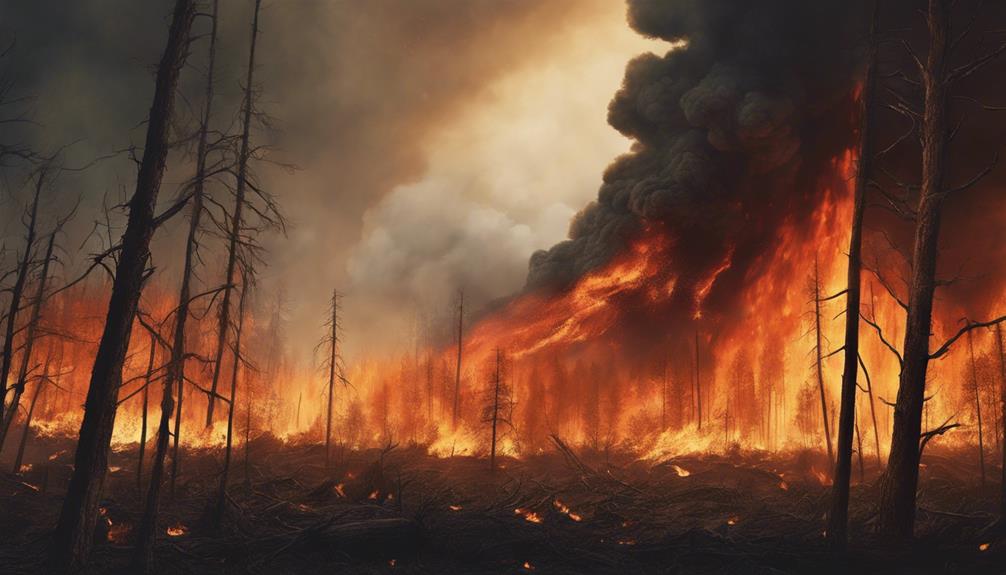Climate change's intricate relationship with natural disasters is a subject of ongoing scientific inquiry, shedding light on the complex mechanisms driving environmental catastrophes. The influence of climate change on the frequency and intensity of disasters is undeniable, prompting a closer examination of how shifting climatic patterns amplify the risks posed by extreme events. Understanding the nuances of this connection is crucial for developing effective strategies to mitigate the impacts of natural disasters in an ever-changing world.
Key Takeaways
- Climate change intensifies natural disasters like floods, hurricanes, and wildfires.
- Altered precipitation patterns exacerbate the severity of storms.
- Understanding climate change's impact is vital for effective disaster mitigation.
- Rising global temperatures contribute to the escalation of extreme weather events.
Understanding Climate Change and Natural Disasters
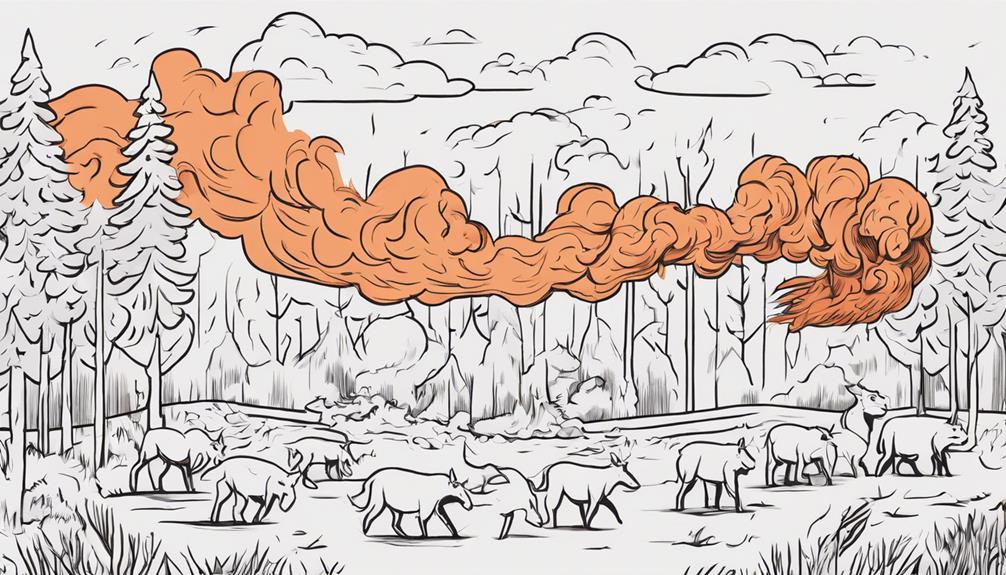
The intricate interplay between climate change and natural disasters underscores the urgent need for a comprehensive understanding of their complex relationship. Climate change affects the frequency and intensity of extreme weather events, leading to more frequent natural disasters. The increasing global temperatures contribute to the escalation of storms and heavy precipitation, resulting in heightened risks of flooding and landslides. Moreover, the impact of climate change on droughts and wildfires is significant, as it creates hotter and drier conditions, prolonging periods of dryness and elevating the potential for fires.
Changes in climate patterns play a crucial role in influencing the occurrence of various natural disasters such as floods, storms, and landslides, posing substantial risks to communities worldwide. Understanding how climate change influences these events is essential for developing effective mitigation and adaptation strategies. By comprehending the relationship between climate change and natural disasters, societies can work towards reducing vulnerability and enhancing resilience in the face of these increasing threats.
Impact of Climate Change on Disasters
Exacerbating the frequency and severity of natural disasters, climate change plays a pivotal role in shaping the destructive impact of extreme weather events globally. The increase in global temperatures, a consequence of climate change, is closely associated with the escalation of extreme weather events such as hurricanes, floods, and wildfires. These phenomena are amplified by the rising sea levels resulting from climate change, which worsen coastal flooding during storms and hurricanes. Furthermore, alterations in precipitation patterns induced by climate change lead to more frequent and intense storms, as well as an increased risk of landslides. The impact of climate change on natural disasters extends beyond these events, affecting the occurrence and intensity of heatwaves, droughts, and tropical cyclones. The table below summarizes the key effects of climate change on disasters:
| Effects of Climate Change on Disasters | |
|---|---|
| Increased frequency of extreme weather events | Intensified storms and landslides |
| Rising sea levels exacerbating coastal flooding | Altered precipitation patterns leading to more intense storms |
Climate Change's Influence on Disaster Frequency

Climate change plays a significant role in altering disaster frequency trends by amplifying the occurrence of extreme weather events. The impact of warming temperatures is evident in the intensification of natural disasters such as floods, hurricanes, and wildfires. Understanding the relationship between climate change and disaster frequency is crucial for implementing effective mitigation strategies and building resilience in the face of escalating risks.
Disaster Frequency Trends
Intensifying natural disasters globally reflect the alarming trend influenced by shifting climate patterns.
Disaster Frequency Trends:
- Increased Frequency: Climate change has led to a rise in the frequency of natural disasters worldwide.
- Variety of Events: Higher temperatures linked to climate change contribute to more frequent occurrences of heat waves, wildfires, floods, landslides, tropical cyclones, and hurricanes.
- Health Impacts: Warmer environments, influenced by climate change, may facilitate the faster spread of diseases and pathogens.
These trends underscore the significant impact of climate change on the frequency and intensity of natural disasters, highlighting the urgent need for mitigation and adaptation strategies to address the evolving challenges posed by a changing climate.
Impact of Warming
The influence of warming temperatures, attributed to climate change, on the frequency of natural disasters has become a paramount concern in scientific discourse. Rising global temperatures, a hallmark of the changing climate, have been linked to an increase in the intensity and frequency of disasters worldwide. This warming trend contributes to heavier precipitation events, which in turn heighten the risk of floods and landslides. Furthermore, the correlation between climate change and the occurrence of heat waves and droughts is well-established, posing significant challenges for ecosystems and societies. As the climate continues to warm, these shifts in weather patterns are expected to exacerbate the vulnerability to a wide range of natural disasters, emphasizing the urgent need for proactive mitigation and adaptation strategies.
Extreme Weather Events
The unfolding consequences of escalating global temperatures on natural disaster occurrences, particularly concerning extreme weather events, underscore a pressing need for comprehensive understanding and strategic interventions.
Key Points:
- Climate change is linked to more frequent and intense extreme weather events such as heat waves, hurricanes, and wildfires.
- Rising global temperatures from climate change contribute to the increased severity of storms and tropical cyclones.
- Climate change leads to alterations in precipitation patterns, resulting in more intense rainfall and flooding events.
The frequency and intensity of extreme weather events are on the rise due to the influence of climate change on natural disasters. Understanding these relationships is crucial for effective disaster management and mitigation strategies.
Climate Change's Impact on Disaster Intensity
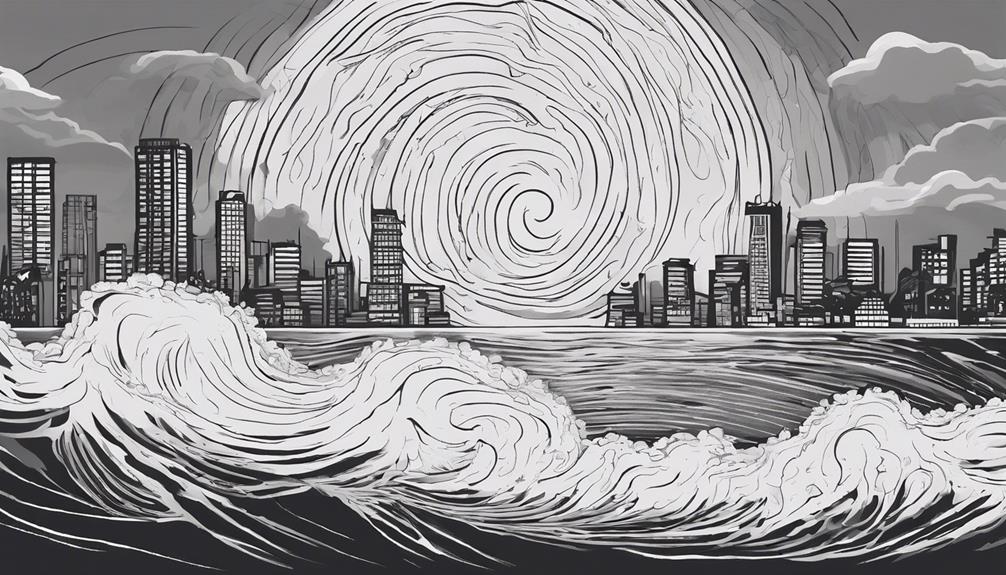
The increased intensity of natural disasters attributed to climate change manifests in rising disaster severity, changing storm patterns, and amplified wildfire risk. As global temperatures continue to rise, extreme weather events become more destructive, leading to heightened impacts on communities and ecosystems. Scientific evidence supports the correlation between climate change and the intensification of disasters, emphasizing the urgent need for mitigation and adaptation strategies.
Rising Disaster Severity
Exacerbated by the effects of climate change, natural disasters are experiencing a notable increase in severity and frequency, posing significant challenges to global resilience and preparedness. This is primarily attributed to rising global temperatures, which lead to more frequent and intense extreme weather events such as hurricanes and heat waves. Additionally, climate change contributes to heavier precipitation, resulting in increased instances of flooding and landslides. These changes in weather patterns not only exacerbate droughts and wildfires but also make them more severe, impacting ecosystems and communities worldwide. The evidence of climate change's influence on natural disasters is undeniable, highlighting the urgent need for proactive measures to mitigate its escalating effects.
Changing Storm Patterns
Amidst the escalating impact of climate change on natural disasters, a crucial focus lies on the changing storm patterns and their profound influence on disaster intensity. As global temperatures continue to rise, the dynamics of weather events are altered, leading to an increase in the intensity and frequency of storms. The warming climate causes storms to hold more water vapor, resulting in heavier precipitation and heightened risks of destructive flooding. Hurricanes and tropical cyclones are particularly affected by rising temperatures, becoming more powerful and dangerous. The shifts in storm patterns, driven by climate change, pose significant challenges to coastal regions and communities worldwide. Understanding these changes is vital for preparedness and mitigation strategies in the face of evolving disaster risks.
Amplified Wildfire Risk
Amplification of wildfire risk due to climate change manifests through heightened frequency and intensity of fires, driven by escalating temperatures and changing environmental conditions.
Factors contributing to the amplified wildfire risk:
- Drier Conditions: Climate change increases the risk of wildfires by creating drier conditions and fueling extreme heat events.
- Longer Seasons: Rising temperatures lead to longer wildfire seasons and more frequent, intense fires.
- Fuel Increase: Changes in precipitation patterns due to climate change can result in more fuel for wildfires in certain regions.
These factors exacerbate wildfires, making them more destructive and challenging to control, highlighting the critical role of climate change in amplifying wildfire risks.
Examples of Climate-Related Disasters
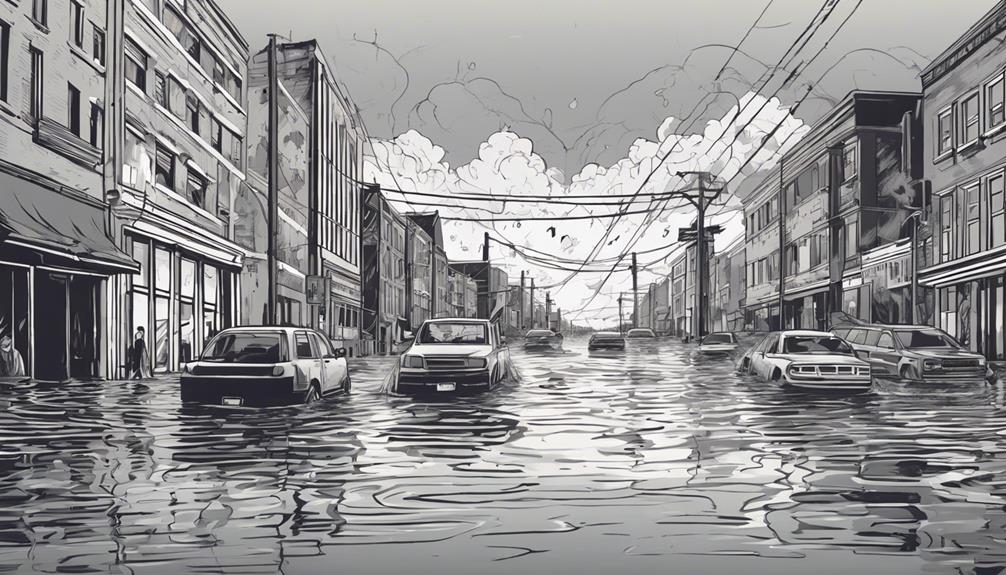
Climate change has played a significant role in shaping various natural disasters around the world, with examples showcasing the escalating impact on vulnerable regions and populations. Extreme weather events like Cyclones Idai and Kenneth in 2019, intensified by climate change, caused widespread destruction in Mozambique and neighboring countries. The Australian wildfires of 2019-2020, exacerbated by hotter and drier conditions linked to climate change, resulted in massive loss of biodiversity and property. In 2011-2012, the East Africa drought worsened by climate change led to food shortages and malnutrition affecting millions. The South Asia floods in 2017, influenced by climate change, displaced millions and caused significant economic and infrastructure damage in countries like India and Bangladesh. The Dry Corridor in Central America, experiencing prolonged droughts due to climate change, has led to food insecurity and migration challenges for communities in the region. These examples underscore the critical connection between climate change and the increasing frequency and intensity of climate-related disasters worldwide.
Vulnerable Regions and Climate-Linked Disasters
In regions susceptible to the impacts of environmental changes, the heightened vulnerability to climate-linked disasters presents a pressing concern for stakeholders and policymakers alike. The following are key aspects of vulnerable regions and their exposure to climate-linked disasters:
- Extreme Heatwaves: Vulnerable regions are at higher risk of experiencing extreme heatwaves due to changing climate patterns. These heatwaves can have severe consequences on human health, agriculture, and infrastructure.
- Powerful Storms: Climate change is leading to the intensification of storms like hurricanes and typhoons in vulnerable regions. Coastal areas face increased risks of flooding and storm surges, causing widespread damage and displacement of communities.
- Rising Sea Levels: Melting glaciers and ice caps contribute to rising sea levels, posing a significant threat to low-lying coastal areas. The increased sea levels exacerbate the risks of flooding, especially during powerful storms, and present long-term challenges for coastal communities in adapting to these changes.
Mitigating Climate Change for Disaster Resilience
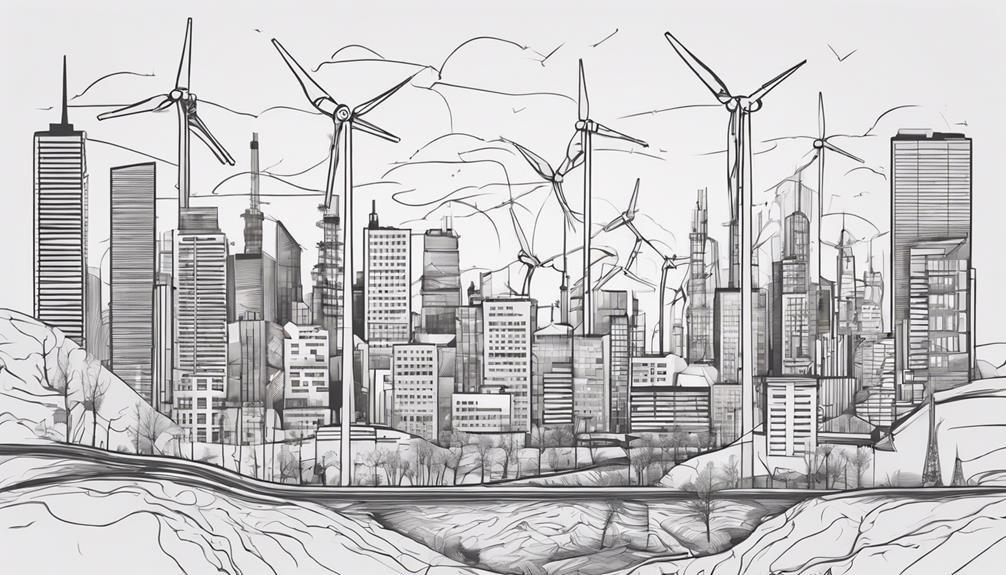
Regions facing heightened vulnerability to climate-linked disasters must prioritize mitigating climate change to bolster disaster resilience and safeguard against the increasing risks posed by extreme weather events. Mitigating climate change involves reducing greenhouse gas emissions through sustainable practices, investing in renewable energy sources, and enhancing natural carbon sinks. Disaster resilience planning is crucial in integrating climate change mitigation efforts to build adaptive capacity and reduce vulnerabilities. International cooperation and agreements play a vital role in ensuring effective disaster resilience strategies are implemented globally. By addressing the root causes of climate change and reducing human-induced activities that contribute to the warming of the planet, communities can better prepare for and withstand the impacts of extreme weather events. Implementing long-term solutions that focus on sustainability and reducing carbon footprints is essential for creating a more resilient future in the face of a changing climate.
| Mitigating Climate Change | Disaster Resilience Planning | Extreme Weather Events |
|---|---|---|
| Reducing greenhouse gas emissions | Integrating climate change mitigation efforts | Increasing frequency and intensity |
| Investing in renewable energy sources | Building adaptive capacity | Rising sea levels and storm surges |
| Enhancing natural carbon sinks | Reducing vulnerabilities | Intense heatwaves and droughts |
| Promoting sustainable practices | Global cooperation and agreements | Severe hurricanes and cyclones |
| Adopting energy-efficient technologies | Long-term resilience strategies | Heavy rainfall and flooding |
Frequently Asked Questions
What Is the Role of Climate Change?
Weather patterns are significantly influenced by global warming, impacting environmental systems. The role of climate change in altering weather patterns is crucial for understanding its environmental impact. Global warming, driven by human activities, intensifies extreme weather events such as heat waves and heavy precipitation. These changes in weather patterns highlight the direct link between climate change and the increasing frequency and severity of natural disasters.
Why Does Climate Change Underlie Disasters?
Climate change is a critical factor underlying disasters due to its profound environmental impact, global consequences, and alteration of weather patterns. The fundamental shift in climatic conditions driven by rising temperatures and erratic weather events significantly heightens disaster risks. This transformation exacerbates the severity and frequency of natural disasters, reflecting the intricate interplay between climate change and environmental vulnerabilities on a global scale.
Is Climate Change a Natural Disaster or Man Made?
Climate change is predominantly a result of human activities that release greenhouse gases into the atmosphere, significantly altering the environment. Scientific evidence unequivocally supports the notion that climate change is primarily man-made. The environmental impact of these human contributions is profound, leading to global temperature increases, extreme weather events, and rising sea levels. This human-induced climate change exacerbates natural disasters, intensifying their frequency and severity.
What Is the Importance of Climate Change and Disaster Management?
In the realm of disaster management, understanding the pivotal role of climate change is paramount for effective risk assessment, preparedness, emergency response, recovery, mitigation, and adaptation strategies. One notable statistic illustrates that over the past 20 years, climate-related disasters have doubled, underscoring the urgency of integrating climate change considerations into disaster management frameworks. This proactive approach is essential to bolster resilience and safeguard communities against the escalating impacts of natural disasters exacerbated by climate change.
Conclusion
In conclusion, climate change acts as the unseen puppeteer, pulling the strings of natural disasters with precision and intensity. Like a symphony conductor, it orchestrates a cacophony of extreme weather events, altering landscapes and disrupting ecosystems. To mitigate this disastrous performance, global efforts must harmonize to reduce greenhouse gas emissions and build resilience against the ever-changing climate composition. The stage is set for a dramatic battle between human actions and nature's wrath.
